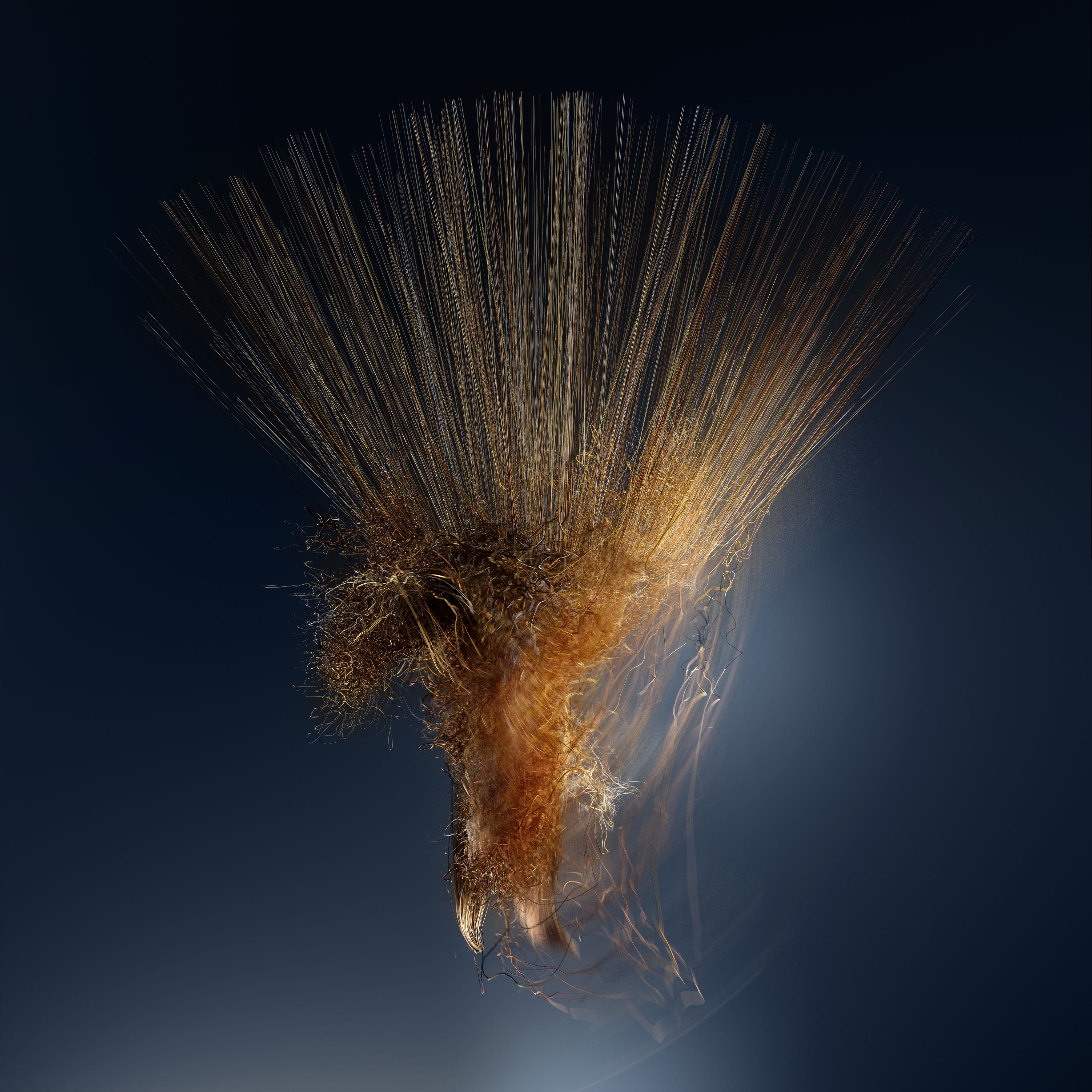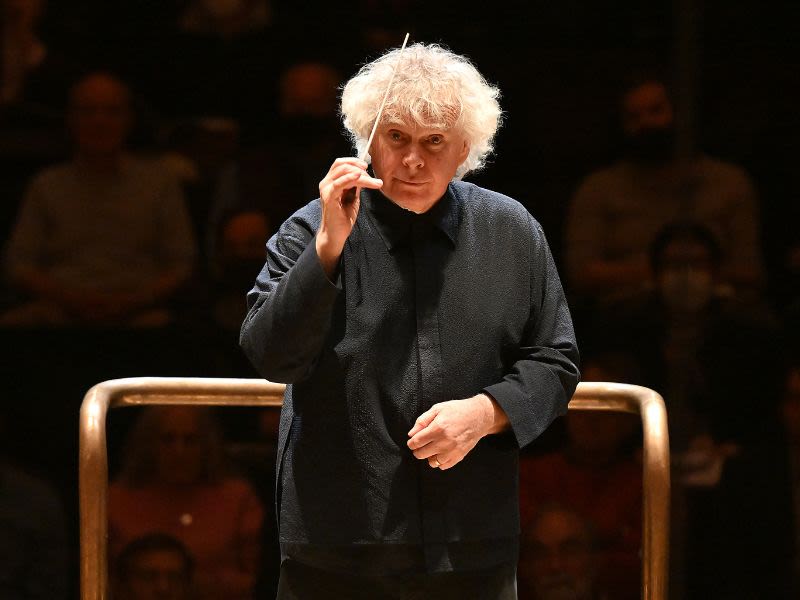Symphony No 4 in C minor
Dmitri Shostakovich
✒️ 1935–36 | ⏰ 61 minutes

What's the story?
At the age of only 28, Dmitri Shostakovich was held up as the great hope of Russian music. His First Symphony – a precocious graduation piece – was being played internationally and he had won success with his music for plays, ballets and films. He had even found favour in the highest political circles with his Second and Third Symphonies, both of which praised the October Revolution of 1917 and the rise of Vladimir Lenin in rousing choral finales. But Shostakovich thought of these two symphonies as ‘completely unsatisfactory’ and for his Fourth, begun in 1935, he was emboldened to invent anew. It was ‘dull, uninteresting and futile’, he said, to tread an already beaten path.
Why is this piece so iconic?
But then the rug was pulled from under his feet. In January 1936, Joseph Stalin, Lenin’s successor, went to a performance of Shostakovich’s lustful second opera, Lady Macbeth of the Mtsensk District, and he strongly disapproved. Two days later the Communist Party newspaper Pravda printed an editorial entitled ‘Muddle Instead of Music’, lambasting the composer for being alien to Soviet culture. ‘The listener is shocked by deliberate dissonance, by a confused stream of sound,’ the article spewed. This was ‘cheap clowning’ that, it darkly noted, ‘may end very badly’. It became dangerous to associate with Shostakovich. He kept a suitcase packed in case the secret police came knocking and sent him to Siberia – or worse.
The premiere of the Fourth Symphony was planned for December. At the last minute, Shostakovich withdrew the piece. It would have to wait 25 years before it was finally heard for the first time, in 1961.
‘The authorities tried everything they knew to get me to repent …
But I refused … Instead of repenting I composed my Fourth Symphony.’
What is the music like?
This is a symphony of tumult and extremes. It’s also a work of magnitude, from the huge size of its orchestra to its great, hour-long span. The contrasts are bold too, with full-orchestral blasts sometimes followed by just a handful of voices. The spirit of Gustav Mahler – who famously claimed a symphony must ‘embrace everything’ – hovers unmistakably.
Two outsized outer movements – around 30 minutes each – straddle the much shorter central one. The first movement launches in with a brutal march – a show of power or a sardonic sneer? Whichever, we are soon blindsided by a display of Romantic warmth. This is a movement of contrasts – with flavours both of heavy battle machinery and of the circus – and multiple climaxes. Add to this a sprawling structure and the effect can be unnerving. The coda ends hesitantly, receding into the distance.
The second movement is based on the Ländler, a rustic cousin of the waltz (of which Mahler was fond), but the mood is far from carefree. A gnawing short-short-long ostinato (repeating rhythm) is a feature, as is a tangle of imitative lines, suggesting on the one hand a certain consensus, on the other a confusion of independent voices. The finale begins with a funeral march (another Mahler influence), which leads to a venomous Allegro. A kaleidoscope of shifting fairground-like scenes follows before the funeral music returns, erupting in a sustained climax. But at the cryptic end, the only thing we can be sure of is uncertainty.
Dmitri Shostakovich
Born: St Petersburg, Russia, 1906
Died: Moscow, Russia, 1975

'If they cut off both hands, I will compose music anyway, holding the pen in my teeth.'
‘I feel as though we have started a new page in the history of symphonic music.’ Nikolai Malko wrote these words in his diary after conducting the premiere of Dmitri Shostakovich’s First Symphony in St Petersburg in 1925. Shostakovich would go on to write 14 further symphonies over 45 years (more than Beethoven, Bruckner, Mahler or Sibelius), music bound up in the shifting political landscape of 20th-century Russia – from the Revolutions of 1917 and the rule of Vladimir Lenin, through the human and artistic atrocities imposed by Joseph Stalin, the siege of Leningrad, and the cultural thaw from the mid-1950s under Nikita Khrushchev.
For 17 years, after a damning editorial in the official newspaper of the Community Party, Pravda, in 1936, he tiptoed precariously around the Communist Party’s views on what was acceptable in music, with the result that his own true beliefs remain obscured in layers of meaning and double-meaning. His final works – the last two symphonies, the last four string quartets and the Viola Sonata – are characterised by their sparse textures and searching intensity.
Shostakovich wrote 15 string quartets, six concertos (two each for piano, violin and cello) and the searing opera Lady Macbeth of the Mtsensk District, plus scores for operettas, around 30 films and a jazz suite, proving he could do satire that was comic as well as tragic. He was also an avid football fan, claiming that football stadiums were ‘the only place where everyone can say out loud exactly what they think and see’.

Keep Listening
Delve deeper into the music featured in our Half Six Fix series, and find related music recommendations, with our Half Six Fix playlist.

Sir Simon Rattle
Sir Simon Rattle has an apparently insatiable appetite for music. Whether it’s early or modern, classical or jazz, concert or opera, he brings a freshness of approach to everything he does. This year marks his 50th anniversary as a professional conductor. For nearly two decades from 1980 he was at the helm of the City of Birmingham Symphony Orchestra, where he converted audiences to a richly varied musical diet. In 2002 he became the only Brit to become Chief Conductor of the Berlin Philharmonic, and in 2017 he joined the LSO as Music Director, 40 years after he first conducted the Orchestra. Last year he became Chief Conductor of the Bavarian Radio Symphony Orchestra and LSO Conductor Emeritus. Earlier this month it was announced he will also join the Czech Philharmonic from next season as a Principal Guest Conductor.

The London Symphony Orchestra

At the London Symphony Orchestra, we strive to inspire hearts and minds through world-leading music-making. We were established in 1904 as one of the first orchestras shaped by its musicians, and today we’re ranked among the world’s top orchestras. As Resident Orchestra at the Barbican since the Centre opened in 1982, we perform some 70 concerts here every year. We also perform over 50 concerts a year to audiences throughout the UK and worldwide, and deliver a far-reaching programme of recordings, live-streams and on-demand broadcasts.
Through our world-leading learning and community programme, LSO Discovery, we’re connecting people from all walks of life to the power of great music. Our musicians are at the heart of this unique programme. In 1999 we formed our own recording label, LSO Live, which has become one of the world’s most talked-about classical labels. As a leading orchestra for film, we’ve entertained millions with classic scores for Star Wars, Indiana Jones and many more.
At the London Symphony Orchestra, we strive to inspire hearts and minds through world-leading music-making. We were established in 1904 as one of the first orchestras shaped by its musicians, and today we’re ranked among the world’s top orchestras. As Resident Orchestra at the Barbican since the Centre opened in 1982, we perform some 70 concerts here every year. We also perform over 50 concerts a year to audiences throughout the UK and worldwide, and deliver a far-reaching programme of recordings, live-streams and on-demand broadcasts.
Through our world-leading learning and community programme, LSO Discovery, we’re connecting people from all walks of life to the power of great music. Our musicians are at the heart of this unique programme. In 1999 we formed our own recording label, LSO Live, which has become one of the world’s most talked-about classical labels. As a leading orchestra for film, we’ve entertained millions with classic scores for Star Wars, Indiana Jones and many more.
At the London Symphony Orchestra, we strive to inspire hearts and minds through world-leading music-making. We were established in 1904 as one of the first orchestras shaped by its musicians, and today we’re ranked among the world’s top orchestras. As Resident Orchestra at the Barbican since the Centre opened in 1982, we perform some 70 concerts here every year. We also perform over 50 concerts a year to audiences throughout the UK and worldwide, and deliver a far-reaching programme of recordings, live-streams and on-demand broadcasts.
Through our world-leading learning and community programme, LSO Discovery, we’re connecting people from all walks of life to the power of great music. Our musicians are at the heart of this unique programme. In 1999 we formed our own recording label, LSO Live, which has become one of the world’s most talked-about classical labels. As a leading orchestra for film, we’ve entertained millions with classic scores for Star Wars, Indiana Jones and many more.

On Stage
Leader
Andrej Power
First Violins
Benjamin Gilmore
Clare Duckworth
Ginette Decuyper
Maxine Kwok
William Melvin
Stefano Mengoli
Claire Parfitt
Laurent Quénelle
Harriet Rayfield
Caroline Frenkel
Alexandra Lomeiko
Hilary Jane Parker
Joonas Pekonen
Shoshanah Sievers
Second Violins
Thomas Norris
Miya Väisänen
David Ballesteros
Matthew Gardner
Naoko Keatley
Alix Lagasse
Belinda McFarlane
Iwona Muszynska
Csilla Pogány
Andrew Pollock
Paul Robson
Momoko Arima
Doretta Balkizas
Ricky Gore
Victoria Lewis *
Erzsebet Racz
Violas
Eivind Ringstad
Gillianne Haddow
Anna Bastow
Germán Clavijo
Thomas Beer
Steve Doman
Robert Turner
Mizuho Ueyama
Errika Collins
Stephanie Edmundson
Matan Gilitchensky
Vanessa Hristova *
Elisabeth Varlow
Cellos
David Cohen
Laure Le Dantec
Alastair Blayden
Ève-Marie Caravassilis
Daniel Gardner
Amanda Truelove
Salvador Bolón
Silvestrs Kalnins
Ghislaine McMullin
Joanna Twaddle
Double Basses
Rodrigo Moro Martín
Patrick Laurence
Thomas Goodman
Joe Melvin
Jani Pensola
Simon Oliver
Hugh Sparrow
Adam Wynter
Flutes
Gareth Davies
Imogen Royce
Julian Sperry
Rebecca Larsen
Piccolos
Sharon Williams
Patricia Moynihan
Oboes
Olivier Stankiewicz
Rosie Jenkins
Maxwell Spiers
Cor Anglais
Drake Gritton
Clarinets
Sérgio Pires
Chi-Yu Mo
Andrew Harper
Sarah Thurlow
Maria Gomes
Bass Clarinet
Ferran Garcerà Perelló
Bassoons
Daniel Jemison
Joost Bosdijk
Dominic Tyler
Contra Bassoon
Martin Field
Horns
Timothy Jones
Diego Incertis Sánchez
Angela Barnes
Olivia Gandee
Jonathan Maloney
Finlay Bain
Jonathan Durrant
Anna Douglass
Phillippa Koushk-Jalali
Trumpets
James Fountain
Jon Holland
Adam Wright
Toby Street
Kaitlin Wild
Trombones
Matthew Gee
Jonathan Hollick
Bass Trombone
Paul Milner
Tubas
Ben Thomson
Adrian Miotti
Timpani
Nigel Thomas
Patrick King
Percussion
Neil Percy
David Jackson
Sam Walton
Tom Edwards
Helen Edordu
Oliver Yates
Benedict Hoffnung
Harps
Bryn Lewis
Lucy Wakeford
Piano
Elizabeth Burley
* Members of the LSO String Experience Scheme
Established in 1992, the Scheme enables young string players at the start of their professional careers to gain work experience by playing in rehearsals and concerts with the LSO. The musicians are treated as professional ‘extras’, and receive fees in line with LSO section players. Kindly supported by the Barbara Whatmore Charitable Trust, the Idlewild Trust and The Thriplow Charitable Trust.
Programme Notes Edward Bhesania. Edward Bhesania is a music journalist and editor who writes for The Stage, The Strad and the Guildhall School of Music & Drama.
LSO Visual Identity & Concept Design Bridge & Partners

